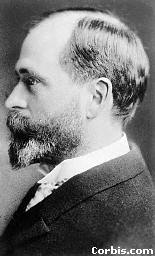Origin of the Idea  <a onClick="window.open('/olcweb/cgi/pluginpop.cgi?it=gif::::/sites/dl/free/0073511447/124310/origins_image.gif','popWin', 'width=70,height=90,resizable,scrollbars');" href="#"><img valign="absmiddle" height="16" width="16" border="0" src="/olcweb/styles/shared/linkicons/image.gif"> (1.0K)</a> <a onClick="window.open('/olcweb/cgi/pluginpop.cgi?it=gif::::/sites/dl/free/0073511447/124310/origins_image.gif','popWin', 'width=70,height=90,resizable,scrollbars');" href="#"><img valign="absmiddle" height="16" width="16" border="0" src="/olcweb/styles/shared/linkicons/image.gif"> (1.0K)</a> | 26.1 Business Cycles |  <a onClick="window.open('/olcweb/cgi/pluginpop.cgi?it=gif::::/sites/dl/free/0073511447/124310/origins_image.gif','popWin', 'width=70,height=90,resizable,scrollbars');" href="#"><img valign="absmiddle" height="16" width="16" border="0" src="/olcweb/styles/shared/linkicons/image.gif"> (1.0K)</a> <a onClick="window.open('/olcweb/cgi/pluginpop.cgi?it=gif::::/sites/dl/free/0073511447/124310/origins_image.gif','popWin', 'width=70,height=90,resizable,scrollbars');" href="#"><img valign="absmiddle" height="16" width="16" border="0" src="/olcweb/styles/shared/linkicons/image.gif"> (1.0K)</a> | 26.2 Real Interest Rates |
 <a onClick="window.open('/olcweb/cgi/pluginpop.cgi?it=gif::::/sites/dl/free/0073511447/124310/origins_image.gif','popWin', 'width=70,height=90,resizable,scrollbars');" href="#"><img valign="absmiddle" height="16" width="16" border="0" src="/olcweb/styles/shared/linkicons/image.gif"> (1.0K)</a> <a onClick="window.open('/olcweb/cgi/pluginpop.cgi?it=gif::::/sites/dl/free/0073511447/124310/origins_image.gif','popWin', 'width=70,height=90,resizable,scrollbars');" href="#"><img valign="absmiddle" height="16" width="16" border="0" src="/olcweb/styles/shared/linkicons/image.gif"> (1.0K)</a> | 26.1 Business Cycles |
The idea of upturns and downturns in economic activity is widespread in economic literature. The Swiss economist Simonde de Sismondi (1773-1842) challenged the Classical economists' belief that the economy would automatically gravitate toward full employment. He argued:
Let us beware of this dangerous theory of equilibrium which is supposed to be automatically established. A certain kind of equilibrium, it is true, is reestablished in the long run, but it is after a frightful amount of suffering.(1)
It was not only socialists like Sismondi and Karl Marx that recognized the volatile nature of economic activity. The English economist William Stanley Jevons (1835-1882) asserted that business cycles were the result of sunspot activity. Jevons' theory was that sunspots influence weather, which in turn affects crop yields. As agricultural production contributed a significant amount to national output in Jevons' time, fluctuations in farm output, prices and incomes could cause instability in overall business activity. Economists ultimately discredited Jevons' theory, but it illustrates that explaining business cycle activity was on the minds of economists of the day.
The economist who perhaps contributed the most to business cycle theory was Wesley Clair Mitchell (1874-1948). Both through his data collection efforts and his theoretical explanations, Mitchell offered insights into business cycles that are still widely accepted. Mitchell described business cycles as self-perpetuating, with one phase of the cycle creating conditions that would move the economy to the next.
"An incipient revival of activity, for example, develops into full prosperity, prosperity gradually breeds a crisis, the crisis merges into depression, depression becomes deeper for a while, but ultimately engenders a fresh revival of activity, which is the beginning of another cycle. A theory of business cycles must therefore be a descriptive analysis of the cumulative changes by which one set of business conditions transforms itself into another set."(2) |  <a onClick="window.open('/olcweb/cgi/pluginpop.cgi?it=jpg::::/sites/dl/free/0073511447/124320/origin08_1.jpg','popWin', 'width=303,height=450,resizable,scrollbars');" href="#"><img valign="absmiddle" height="16" width="16" border="0" src="/olcweb/styles/shared/linkicons/image.gif"> (105.0K)</a> <a onClick="window.open('/olcweb/cgi/pluginpop.cgi?it=jpg::::/sites/dl/free/0073511447/124320/origin08_1.jpg','popWin', 'width=303,height=450,resizable,scrollbars');" href="#"><img valign="absmiddle" height="16" width="16" border="0" src="/olcweb/styles/shared/linkicons/image.gif"> (105.0K)</a> |
Mitchell's greatest contribution to the study of business cycles came when he founded the National Bureau of Economic Research in 1920. Even today the NBER collects and disseminates vital economic data and studies to researchers, teachers, and policymakers.
John Maynard Keynes formalized the analysis of business cycles in his General Theory of Employment, Interest, and Money in 1936. We will say more about Keynes in subsequent history "buttons."
- Simonde de Sismondi, New Principles of Political Economy, vol. 1
(1819), 20-21.
- Wesley C. Mitchell, Business Cycles and Their Causes (Berkeley: University
of California Press, 1941), ix. [Originally published in 1913.]
Photograph courtesy of: (c)Corbis #WAD0063;
 <a onClick="window.open('/olcweb/cgi/pluginpop.cgi?it=gif::::/sites/dl/free/0073511447/124310/origins_image.gif','popWin', 'width=70,height=90,resizable,scrollbars');" href="#"><img valign="absmiddle" height="16" width="16" border="0" src="/olcweb/styles/shared/linkicons/image.gif"> (1.0K)</a> <a onClick="window.open('/olcweb/cgi/pluginpop.cgi?it=gif::::/sites/dl/free/0073511447/124310/origins_image.gif','popWin', 'width=70,height=90,resizable,scrollbars');" href="#"><img valign="absmiddle" height="16" width="16" border="0" src="/olcweb/styles/shared/linkicons/image.gif"> (1.0K)</a> | 26.2 Real Interest Rates |
Irving Fisher (1867-1947) was the first economist to distinguish explicitly between the nominal and real rate of interest. So recognized was his contribution that an increase in the nominal interest rate in anticipation of inflation is known as the "Fisher effect."
Irving Fisher was a man of eclectic interests. Prior to his life as an economist, Fisher was a professor of mathematics at Yale, and wrote a number of popular mathematics textbooks (popular, at least, to the professors who used them). Fisher was also something of an inventor, but his only profitable invention was the rotary index card file, better known today by the trademark name "Rolodex." Fisher earned about $1 million for the invention, which grew to the princely sum of $9 million before being lost in the stock market crash of 1929.
Because of his own health problems, Fisher studied diet and health fads, and wrote several books on leading a healthy lifestyle. His interest in medical issues carried over into support for eugenics and opposition to tobacco and alcohol.
In the area of public policy, Fisher campaigned for Prohibition, advised President Franklin D. Roosevelt on monetary policy from 1932 to 1937, and proposed a league of nations, long before World War I and the Treaty of Versailles.
|  <a onClick="window.open('/olcweb/cgi/pluginpop.cgi?it=jpg::::/sites/dl/free/0073511447/124320/origin08_2.jpg','popWin', 'width=205,height=326,resizable,scrollbars');" href="#"><img valign="absmiddle" height="16" width="16" border="0" src="/olcweb/styles/shared/linkicons/image.gif"> (10.0K)</a> <a onClick="window.open('/olcweb/cgi/pluginpop.cgi?it=jpg::::/sites/dl/free/0073511447/124320/origin08_2.jpg','popWin', 'width=205,height=326,resizable,scrollbars');" href="#"><img valign="absmiddle" height="16" width="16" border="0" src="/olcweb/styles/shared/linkicons/image.gif"> (10.0K)</a> |
Photograph courtesy of: (c)Bettman/Corbis; |


